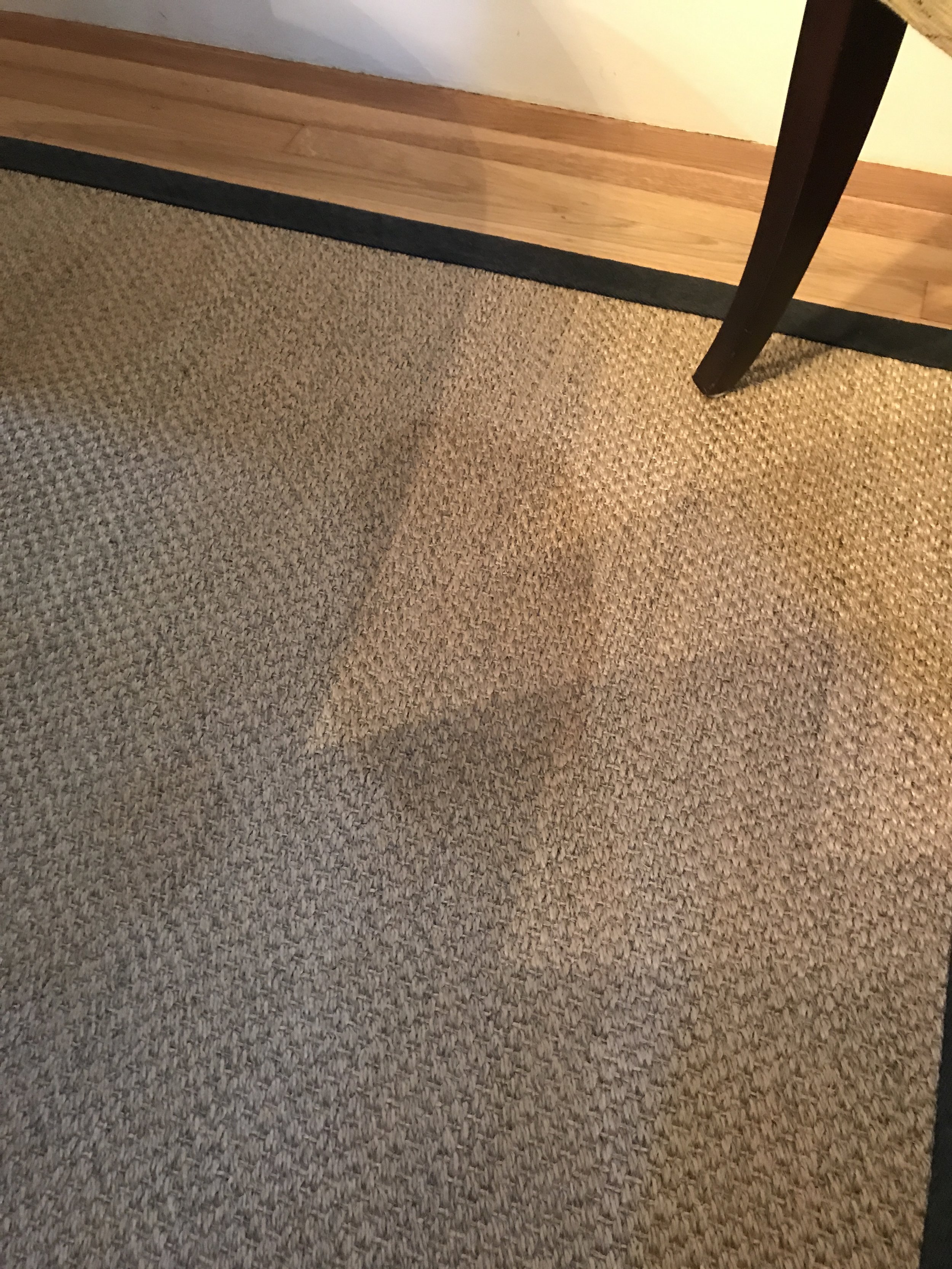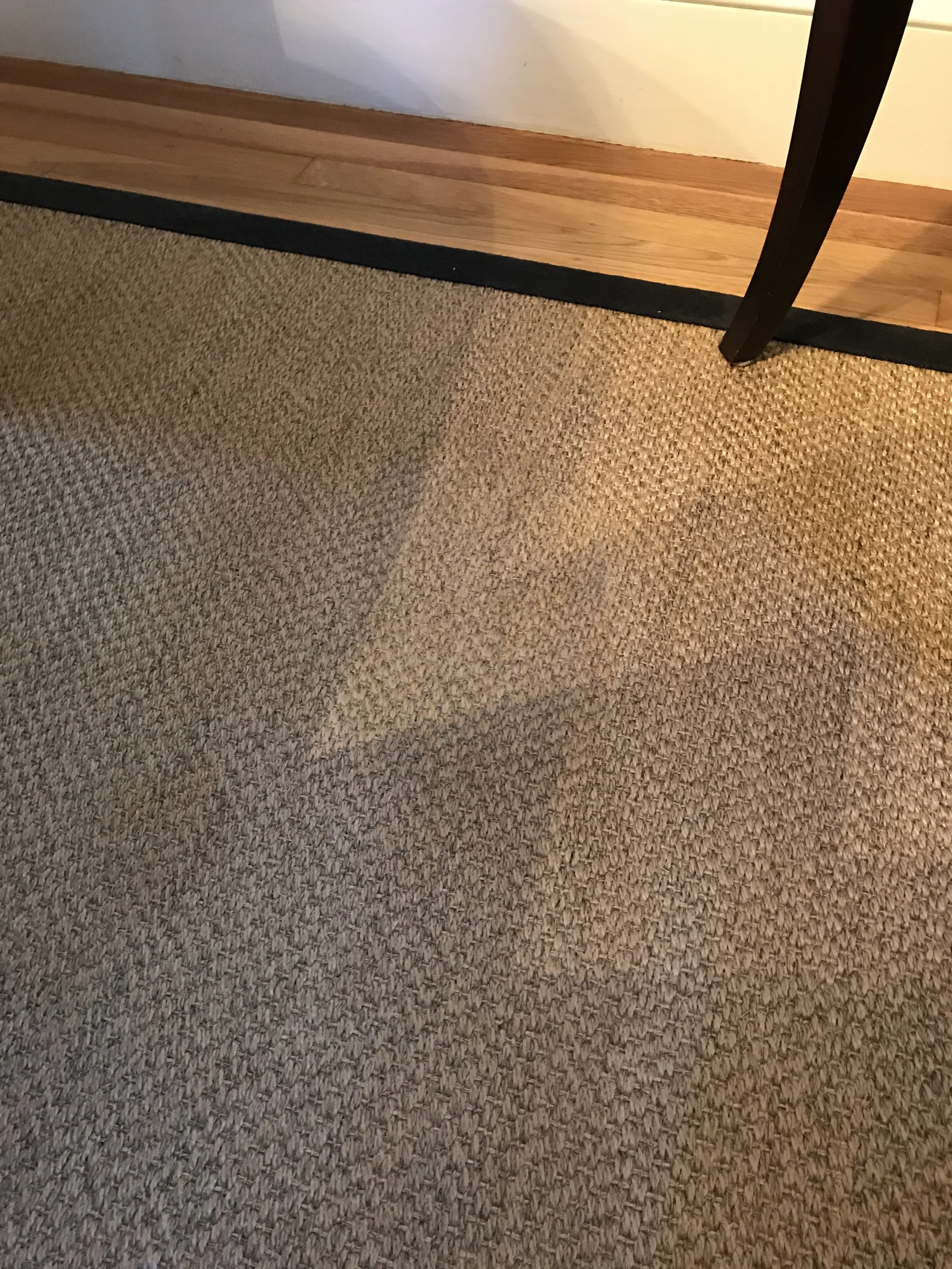The above pictures show a sisal area rug that was contaminated with pet urine.
Sisal, jute, and other cellulosic fibers are drastically different than synthetic or even wool carpet and rugs. Cellulosic fibers are made from cellulose, which is a long chain of glucose present in plants. Cellulosic fibers are very susceptible to moisture because they are extremely absorbent, due to their absorbency they stain very easily and swell when they become saturated. When cellulosic fibers swell they actually appear to shrink, this is because when one area swells, the adjacent area is pulled giving a wrinkled appearance that looks like shrinkage.
Given that cellulosic fibers are susceptible to moisture they are typically best cleaned with a dry compound; cotton often being an exception to this rule. A dry compound is an adsorbent material, meaning it accepts a thin film upon itself. Dry compound is brushed into and against fibers to transfer soil from the fiber to the dry compound. The dry compound is then vacuumed away. The first step in removing the pet urine from this rug was a dry compound cleaning.
After using the dry compound soiling was removed, but there was still some visible staining. At this point we were able to lightly apply just enough moisture to allow an oxidizing product to lighten the color of the staining, but not so much moisture as to allow the fibers to absorb moisture beyond the surface. The oxidizing process is followed by drying via high speed air movers. In this instance the oxidizing product was applied a second time, again followed by air movers for drying.
After the use of the oxidizer the staining was improved about eighty to ninety percent. The remainder of the stain removal process was color correction, which in this case was a lightening of the fiber. After this step we were left with the result in the second picture.
Cellulosic fibers are considered by many to be very attractive, but it is important to understand their limitations and susceptibilities.


